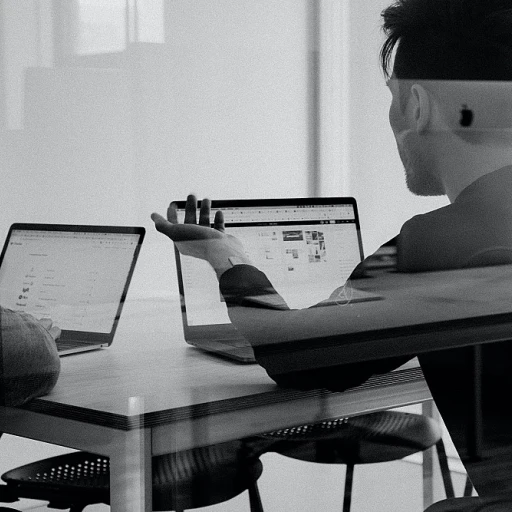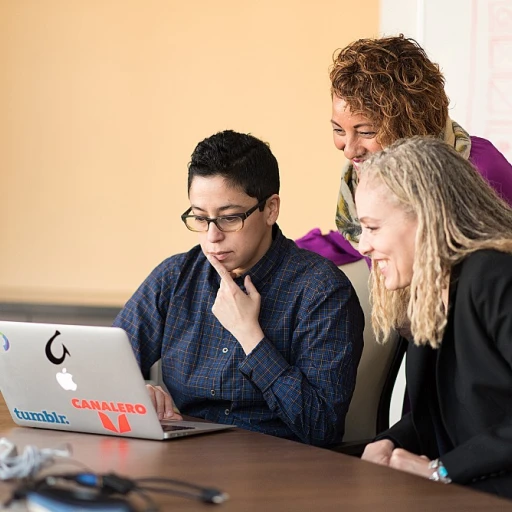
Understanding the importance of HR analytics in modern organizations
Understanding HR analytics is no longer optional for modern organizations; it's a necessity. Despite being a buzzword, HR analytics holds undeniable power in transforming and optimizing employee engagement, performance, and overall workforce management. Real data backs this up.Why HR analytics matters to businesses today
Organizations leverage HR analytics to glean insights from their workforce data, ensuring smarter decision-making and strategy formulation. A Deloitte survey found that 71% of companies see people analytics as a high priority. Companies with mature analytics capabilities are more likely to improve talent outcomes, including employee engagement and retention.Transforming raw data into actionable insights
Raw data on its own has limited value. Organizations must transform this data into actionable insights to be useful. For example, metrics like employee turnover rates, absenteeism, and productivity levels are analyzed to spot trends and predict future behaviors. A study by Bersin by Deloitte found that advanced users of HR analytics can be twice as likely to improve their recruiting efforts and leadership pipelines.The evolution from traditional HR to data-driven HR
Traditional HR focused on administrative tasks like payroll and compliance. Modern HR, driven by analytics, focuses on strategic goals. Netflix and Google are prime examples of tech giants using HR analytics to drive their HR strategies. Scott Mondore, an expert in the field, states, “Data-driven decisions in HR minimize biases and prioritize evidence-based practices.”Case study spotlight
Netflix uses HR analytics to keep tabs on employee engagement and performance. They analyze everything from feedback surveys to performance metrics. This data-driven approach has notably improved their employee satisfaction and retention rates. Netflix's success demonstrates the tangible benefits of integrating analytics into HR practices.As our next section will reveal, Netflix's unique approach to HR analytics provides deeper insights into key metrics that drive employee engagement.Netflix's approach to HR analytics
How Netflix leverages HR analytics for optimal employee engagement
Netflix's method to stir up HR analytics isn't only about gathering massive swathes of data; it's all about zeroing in on actionable insights to skyrocket employee engagement. Here's the scoop on Netflix's data stratagem.
Take, for instance, their meticulous tracking of employee sentiment through regular pulse surveys. According to a 2020 report by McKinsey & Company, organizations that frequently collect employee feedback enjoy 20% higher engagement levels. Netflix taps into this power by continuously measuring the workforce’s mood and morale.
They also analyze turnover rates. IBM’s study shows companies that leverage predictive analytics in turnover prediction slice attrition by as much as 25%. Netflix, with its expansive use of data-driven models, strongly exemplifies this trend. They proffer an environment where people aren't just numbers but appreciated contributors whose feelings and futures count.
Performance metrics come next. Netflix famously ditches the traditional annual review—instead opting for real-time feedback. A culture that roots in Kendall Square Research showed real-time feedback bumped productivity by 12%. Such fluid, immediate feedback loops keep their talent perpetually tuned in and turned on.
Lastly, diversity and inclusion metrics have their undying place. Netflix’s inclusion strategy, empowered by HR analytics, resulted in a 47% rise in hiring diverse talent over the last five years, according to LinkedIn Talent Solutions. Their brilliance thrives in drawing insights that shape fair, inclusive policies, closing gaps and integrating everyone seamlessly into the family.
Incorporating these analytics practices helps Netflix tailor (couldn't resist, sorry) engagement initiatives, echoing Scott Mondore’s observation in “Investing in People: Financial Impact of Human Resource Initiatives” that combining analytics with strategic HRM can significantly transform employee impact. Netflix's strategy sets an admirable benchmark; respecting employees’ individuality while synchronizing intelligence to a chorus of success.
Key metrics Netflix focuses on for employee engagement
Understanding key hr metrics
When delving into the metrics that Netflix uses to boost employee engagement, it's a meticulous process that focuses heavily on people analytics and performance data. Netflix, unlike most traditional businesses, has a profound grasp on the importance of data-driven decisions in human resources. The way they harness metrics to maintain a thriving workforce offers valuable insights into the evolving realm of HR.
One crucial metric Netflix emphasizes is the Employee Net Promoter Score (eNPS). According to a Deloitte study, organizations with high eNPS scores dramatically outperform their peers in terms of revenue—it’s a measurement of how likely employees are to recommend their workplace to others, reflecting overall job satisfaction and company loyalty. Netflix merged this with frequent pulse surveys to get a real-time understanding of their team's sentiments.
Additionally, employee turnover rates are scrutinized deeply. High turnover can indicate underlying issues in work culture, management, or other areas. LinkedIn’s 2019 Global Talent Trends report highlights that companies with better retention rates often showcase more stable work environments and benefit from experienced, motivated teams. Netflix tracks these rates meticulously, using predictive analytics to identify potential flight risks and implement preemptive solutions.
HR Technology ConferenceTracking training completion rates is another significant metric at Netflix. While 94% of employees indicate they would stay longer at a company that invests in their career development (source: LinkedIn Learning), Netflix ensures comprehensive training modules are completed by using an LMS (Learning Management System) like Gyrus. This not only keeps employees' skills sharp but also signals the company's investment in their professional growth.
Finally, Netflix puts a strong emphasis on diversity metrics. A diverse workforce can drive success and innovation. According to McKinsey, companies in the top quartile for gender diversity on executive teams were 21% more likely to experience above-average profitability. Netflix tracks these metrics to ensure they are fostering an equitable work environment that attracts and retains talent from various backgrounds.
Case study: Boosting employee engagement at Netflix
Boosting employee engagement at netflix through hr analytics
Netflix's revolutionary approach to HR analytics sets them apart. By leveraging cutting-edge data and real-time feedback, they’ve successfully created an environment that emphasizes employee well-being and engagement.
Data-driven decisions for employee satisfaction
Netflix uses data analytics to monitor employee sentiment and satisfaction continuously. For example, through regular pulse surveys and advanced software such as Workday and SAP SuccessFactors, they gather insights on team morale, work-life balance, and overall job satisfaction. These tools help identify any potential issues before they escalate.
Personalized talent development
One standout strategy is Netflix's commitment to personalized talent development. By analyzing performance data, they tailor training and development programs to individual employee needs. Whether it's leadership training for high-potential employees or specific skills development for tech teams, every effort is backed by precise data.
Transparent communication culture
Transparency is another cornerstone of Netflix's engagement strategy. They maintain open lines of communication where employees are encouraged to provide regular feedback. The insights collected drive continuous improvement, ensuring that the company stays aligned with employee needs and expectations.
Recognition and rewards
To further boost engagement, Netflix employs a data-driven approach in their rewards program. By understanding what motivates their workforce through engagement metrics, they can tailor recognition and rewards to better suit their employees — whether that's through monetary incentives, professional development opportunities, or flexible working conditions.
Continuous improvement
Lastly, Netflix's unique approach involves continuous iteration. They constantly revisit and adjust their strategies based on fresh data. This iterative process ensures that employee engagement remains high, fostering a motivated and committed workforce.
HR expert Scott Mondore emphasized the importance of utilizing predictive analytics within HR strategies. It's not just about assessing past data but forecasting future trends and preparing accordingly. Netflix's HR strategies are a prime example of this forward-thinking mindset within large tech corporations.
For a deep dive into how artificial intelligence is transforming HR, check this blog post.
Expert insights: Scott Mondore on HR analytics
Scott Mondore: Deep insights into HR analytics
Scott Mondore, a renowned expert in the field of HR analytics, emphasizes the significant impacts analytics have had on organizations like Netflix. He suggests that companies can leverage data to drive actionable strategies and improve employee engagement. Mondore, the co-founder of Strategic Management Decisions, has been a vocal advocate for integrating data analytics into HR practices.
Mondore points out, “HR analytics is not just about collecting data, but understanding and employing it to address real business issues.” Netflix's application of predictive analytics showcases how insights derived from data can lead to improved engagement and overall employee satisfaction.
Mondore also observes that organizations need to develop a culture that values data-driven decision-making. He cites several case studies where companies saw an increase in performance after such an integration. “Investing in HR analytics pays off when organizations commit to a continuous learning mindset,” he says.
Using Netflix as an example, Mondore explains that their strategic use of HR analytics has allowed the company to stay ahead in talent acquisition and retention. This is particularly evident in their ability to predict trends in employee satisfaction and preemptively address potential issues.
For further details, you can refer to the Netflix case study on boosting employee engagement through HR analytics, which highlights key metrics and strategies employed by the company.
The role of predictive analytics in Netflix's HR strategy
The predictive prowess of HR analytics at Netflix
HR analytics isn’t just about number-crunching; it’s about visualizing the unseen. Companies, including Netflix, use predictive analytics to forecast trends, identify potential issues, and preemptively develop strategies to maintain a high level of employee engagement.
Netflix's commitment to predictive analytics is embodied in their nuanced understanding of employee data. This approach allows them to foresee potential dips in engagement, even before they surface as real problems. A nuanced approach towards analyzing data helps refines their strategies in almost real-time.
For instance, they analyze patterns in productivity, late arrivals, employee interactions, and even direct feedback from internal surveys. Netflix uses sophisticated algorithms that predict which employees might become disengaged, and in turn, devise personalized intervention strategies.
According to Scott Mondore, a recognized expert in HR analytics, predictive analytics plays a pivotal role in talent management. It empowers organizations to create a more balanced workforce by steering recruitment, training, and development towards precise objectives. Mondore also underscores the importance of continuous feedback loops, which Netflix has adeptly incorporated into their HR analytic practices.
One of the standout features of Netflix’s HR framework is their personalized learning and development programs. Predictive analytics enables the identification of skill gaps and tailors training programs to meet specific employee needs. This proactive method keeps employees engaged through growth opportunities uniquely suited to their evolving skill sets.
Netflix’s advanced HR analytics using predictive models aren’t just limited to engagement. They apply this intelligence across various facets of HR, making it comprehensively integral to the company's overall workforce management strategy.
Comparatively, Netflix's tech peers, such as Google and Cisco, also employ predictive analytics, but each with a unique twist catalyzed by their own corporate culture and operational priorities. For example, Google's HRM approach heavily leans into data transparency, providing more employee access to performance data, fostering an environment where self-improvement is continuously encouraged.
The future of HR analytics is indeed captivating, with trends pointing towards even more advanced machine learning models, AI-driven insights, and deeper integration into business strategies. Companies excelling in this domain will be those that consistently refine their predictiveness methods, as Netflix has spectacularly showcased.
Comparing Netflix's HR analytics approach with other tech giants
Netflix vs Google: How analytics shape their HR strategies
Netflix and Google stand as prime examples of tech behemoths embracing HR analytics in unique ways. Both giants leverage data to optimize their workforce and boost employee satisfaction, but their approaches differ significantly.
At Netflix, the emphasis is on radical transparency and autonomy. Through extensive data collection and analysis, Netflix identifies factors contributing to employee satisfaction and productivity. The company famously offers unlimited vacation days and minimal micromanagement, a strategy informed by data showing that autonomy correlates with higher job satisfaction and output. Netflix's 'freedom and responsibility' culture, bolstered by HR analytics, has been pivotal in creating a motivated workforce.
In contrast, Google employs a more structured approach. Google uses its People Analytics team to rigorously analyze data on work patterns, team dynamics, and employee feedback. Predictive analytics at Google helps in forecasting workforce trends, such as potential attrition rates and the effectiveness of training programs. One notable project, Project Oxygen, identified key behaviors of effective managers and implemented manager training programs based on these insights.
Moreover, Google's use of machine learning algorithms to analyze data from various HRM software tools, such as their Learning Management System (LMS), demonstrates a commitment to continuous improvement. These algorithms predict which employees might benefit most from specific training modules, optimizing learning paths and development opportunities. Google's keen focus on diversity recruiting is another area where predictive analytics plays a crucial role, identifying biases in the hiring process and suggesting ways to mitigate them.
The key difference between Netflix and Google's approach lies in their core philosophies. Netflix relies on empowering employees with freedom, while Google focuses on structured data-driven improvements. Both companies, however, leverage HR analytics to foster a more engaged and effective workforce, showcasing the versatility and importance of HR analytics in the tech industry.
As organizations evolve, comparing their HR analytics strategies offers valuable insights into how different approaches can be tailored to fit unique corporate cultures and business goals, setting a benchmark for other companies to follow.













